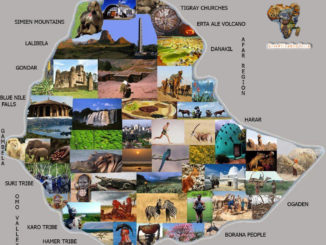
After 20 years, border crossings between Ethiopia and Eritrea have reopened, months after the countries signed a peace deal.
Eritrean women express their joy after crossing the border to attend the reopening border ceremony on 11 September.
People living on either side of the border – which was disputed in a war between the countries that started back in 1998 – were reunited with friends and loved ones they had not been able to visit over the past two decades, reports the BBC. While the conflict ended in 2000, the countries still had not agreed a peace deal and the borders remained closed.
Now, a border reopening ceremony was held on 11 September and two land crossings were reopened for the first time in years. The crossings were between Bure in Ethiopia and Debay Sima in Eritrea in the east, and between Zalambessa and Serha in the west. As tensions eased following the peace deal, the first flight between the countries took place in July, connecting Addis Ababa and Asmara airports, and each country has reopened its embassy in the other.
The move is a positive step for diplomacy, but also for those who want to explore the region by land. According to Lonely Planet’s Africa expert Matt Phillips: “For travellers, the opening of the border is a huge deal. It will allow easy access to Eritrea and its fascinating capital from Ethiopia’s famed historical circuit.”
But, for travellers leaving Ethiopia and hoping to visit Eritrea, getting a visa is difficult. While travellers can pay and apply for a visa, it is rare to be accepted. If you make it to Asmara, permits are required to leave the capital. “The only large issue remaining is the difficulty in acquiring tourist visas to Eritrea. Until that hurdle is removed, the border won’t see a flood of tourists flowing through. When the visa situation is sorted, the border opening will revolutionise travel in the Horn (of Africa).” Luckily, reports has it that the government seems to be loosening its stance on travel visas, which could see more people exploring the country.
Asmara, Eritrea’s capital, was named a Unesco World Heritage Centre last year, due to its many examples of modernist and art deco architecture, a remnant of when it was used as a military outpost during the Italian colonial occupation. It could soon be easier to reach for travellers exploring the historic route in Ethiopia, which covers incredible sights like the Blue Nile Falls, the Simien Mountains, Gonder, and the ruins of Aksum.
Credit: Lonely Planet.




Be the first to comment